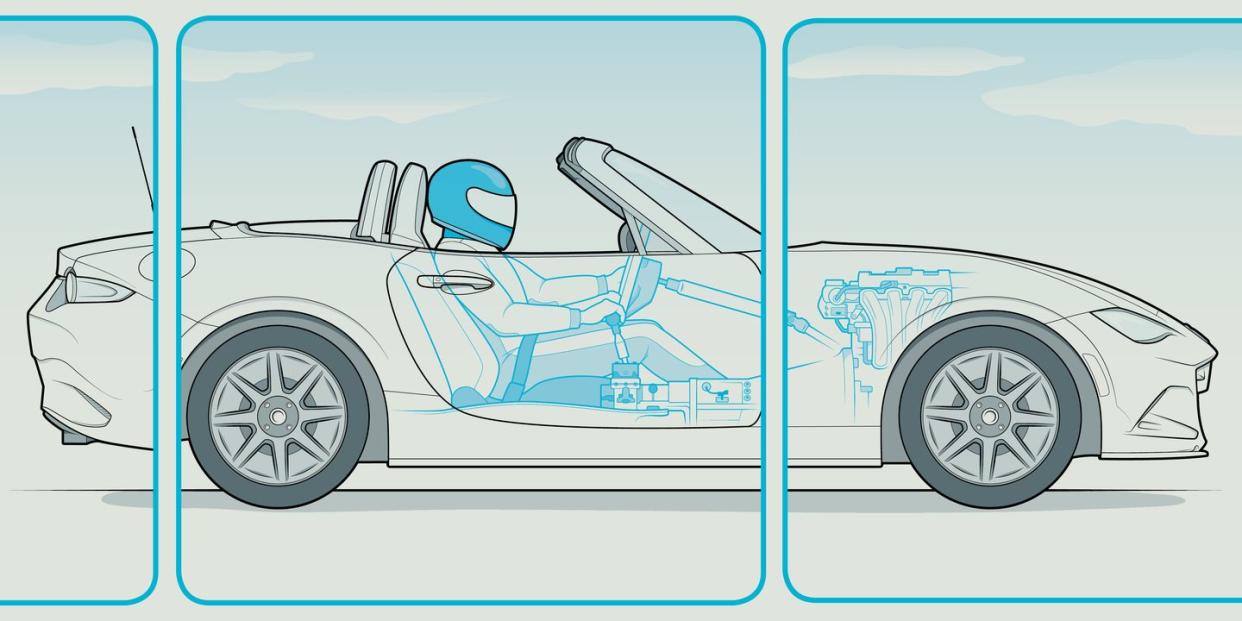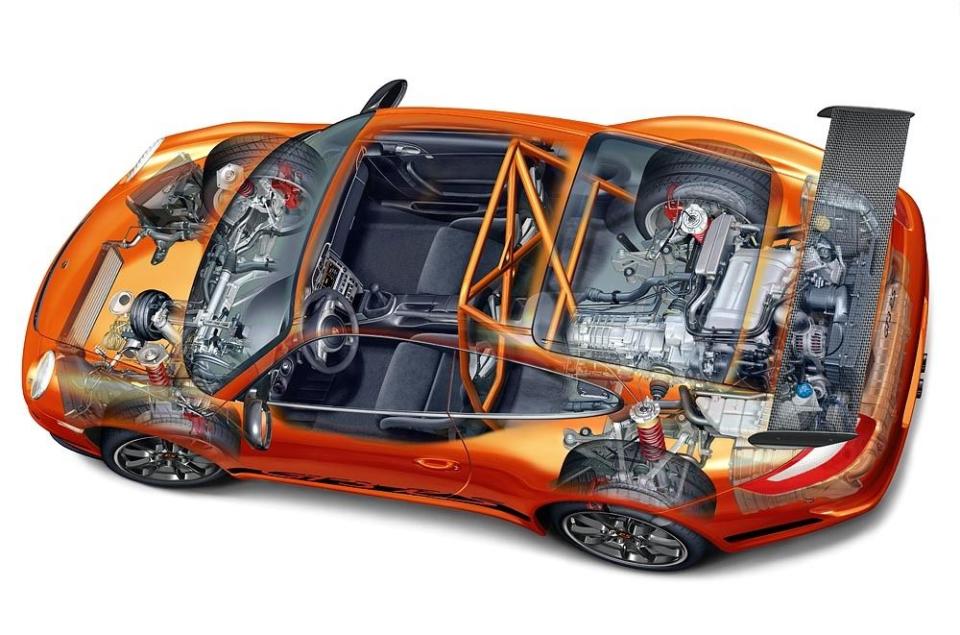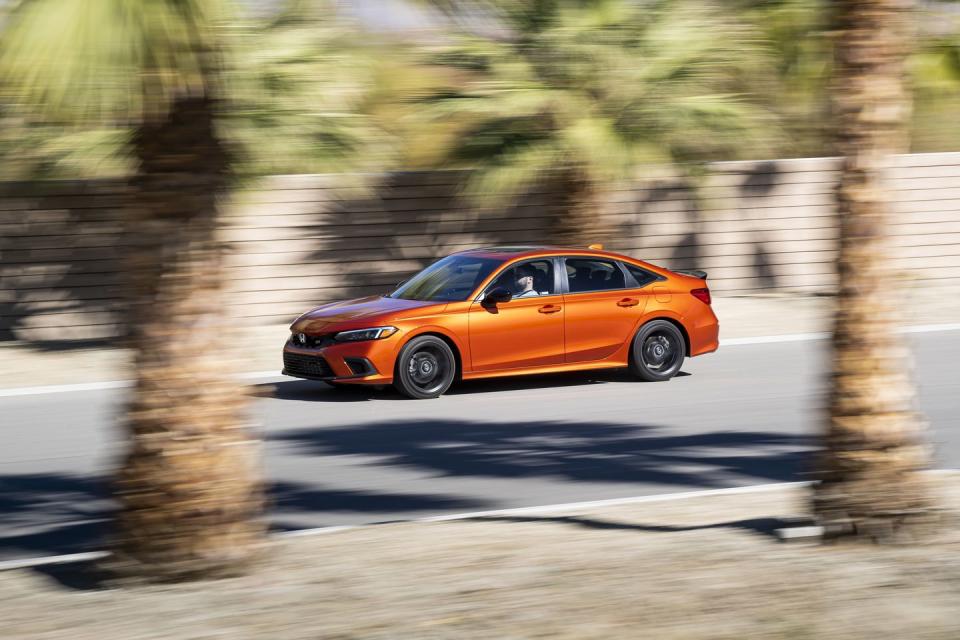What Makes a Great Manual Car

I spent some time in a new Mazda Miata a couple weeks ago, which invariably means I want a new Mazda Miata. It's one of those cars that makes you a better, smoother driver immediately, and so much of that is down to the transmission. The Miata has one of the best manual transmissions of any car ever made, and that's not simply because it has a great shifter—it takes a lot more than that.
Mazda is particularly good at looking at the car as a complete system, not just a collection of components bolted together. Everything has to work together in order for the car to feel cohesive, and in the newest Miata, that leads to a manual experience that is second to none. It got me thinking, and led me to a conclusion that I've known for a long time, but never articulated—the best manual-transmission cars are about so much more than just the shifter.
Let's start by talking about control weights. In an ideal world, you want the effort required by the shifter, plus throttle and clutch pedals to match one another. Obviously the amount of force required to operate something by hand versus foot are going to vary significantly, but essentially, you want efforts to feel matched. We've all driven cars with a heavy clutch, either a result of miles of abuse, or just simply a heavy component. It sort of ruins the experience, makes the process of shifting gears less smooth. It's true with an overly light, or an overly springy clutch, too.
The actual weight of the shift action is defined by a number of factors like the weight of the gearbox components—low-output cars generally have smaller, lighter transmission internals—temperature, shift linkage, and shift throw. All performance-car drivers want a short shift in theory, but as shift length decreases, the effort it takes to shift the gears increases. You are, after all, operating a lever, and as the length goes down, so does your leverage. Automakers need to find the right compromise here. You don't want slop, nor do you want a workout. Gear engagement feel is important too, and that's where both the synchromesh and linkage design come in. The cliche for a great gearbox is a "rifle-bolt" action, a metal-on-metal feel that apparently goes right from your hand to the pleasure center in your brain. (Apparently.)

Metal rods, especially short ones, provide the best shift feel, though quite often automakers have to use shift cables, as they're far easier to package. As we learned in my article on Honda shifters, this isn't ideal—longtime transmission designer Chris Weismann shared a phrase often used by his grandmother, "you can't push a rope," meaning that the shift is always going to feel better in one direction than the other. With cables, you also want the straightest possible path from the shifter back to the gearbox. The team behind the Ford GT actually routed the shift cables through the "valley" of the V-8, under the intake manifold to ensure better feel.
As good as a shifter might be, it's nothing without good throttle response. That is, you need not just a quick but a predictable response from the engine matched with the gas pedal. The Lotus Evora, for example, is a car I adore, but beyond having a pretty strange shifter with a very light action and narrow gates plus syncros that are too easy to beat, it's hard to get a perfect throttle blip. For whatever reason, the engine responds slowly to quick stabs of the right pedal, requiring a very deliberate blip that's hard to get right. That throttle work is key for rev-matching downshifts. Now, you don't need to rev-match every single downshift, and lord knows I don't, but it's very useful for extending the life of the synchros and maintaining chassis balance.
Above: Aryton Senna demonstrates his heel-toe technique in an NSX-R. Loafers are a key component.
Pedal placement is crucial, too. I'm personally very fond of air-cooled 911s, yet I don't think I've ever successfully executed a heel-toe downshift in many miles in the driver's seat. Owing to its Beetle origins, old 911s use floor-hinged, rather than top-hinged pedals. I'm told these can be adjusted somewhat, but in the dozen or so air-cooled cars I've driven, the brake pedal is very high relative to the throttle. To make heel-toe easy, you want the brake and the throttle to be close together both in terms of spacing and height.
(Side note: Heel-toe is tricky, and really best left to instances when heavy braking, a downshift, and a smooth transition to maintenance throttle are required. If you feel like you haven't yet mastered this skill yet, don't feel bad.)
There is, of course, an exact engine speed to target for a 100-percent perfect rev match, though it's impossible to determine that in the moment. For that, a light flywheel is a big help, as it's more forgiving if you vastly overshoot the engine speed needed. Though as is becoming a theme here, you might not want your flywheel to be too light.

A couple years ago, I had the opportunity to drive a 997-generation Porsche 911 GT3 RS 3.8, still one of the best cars I've ever driven. However, a combination of razor-sharp throttle response, and a super-light flywheel made rev-matching, especially heel-and-toe very difficult. Unless you give the throttle the lightest, quickest stab, the engine will scream to redline almost instantaneously. Damn exciting, I'll admit, and I love the challenge, though I imagine even the most experienced drivers won't get it right every time. On the flipside, the throttle response can't be too slow, otherwise, it just slows down the entire process of changing gear, and makes things less smooth.
We must also talk about rev-hang, and if you heard a loud sigh, that was all the Honda owners reading this story. When you come off the throttle pedal, there is unburned fuel in the intake manifold, which contributes to rich combustion. This is bad for emissions, and in a world where emissions standards are incredibly tight and ever-tightening, automakers need to employ a number of tricks to clean up their cars. Rev-hang describes a situation where the ECU holds the throttle open after the driver has released the throttle pedal, enabling a cleaner burn.

Obviously, this is only possible with electronic throttle control, and it makes for an unpleasant experience for the driver. Engine speed stays high until the ECU allows revs to fall, which sometimes doesn't even happen until well after the clutch is depressed, making it very hard to shift smoothly. Honda is perhaps the worst with this. In the new Civic Si, for example, rev hang ruins the experience of shifting an otherwise-great manual. Thankfully the Civic Type R doesn't have this problem, but it is unfortunately the exception among Honda products.
Honda isn't the only one either—the new Toyota GR86/Subaru BRZ exhibit rev-hang, and while the new WRX doesn't, the old model was notorious for it. Volkswagen also uses this trick to reduce emissions. The best thing to do is to shift slowly, which feels paradoxical. In an old car, with more primitive synchromesh—or perhaps no syncros at all—you need to shift slowly to aid the car getting into gear. In modern cars with rev-hang, generally everything else with the gearbox allows for quick shifts…except you need to slow down to smooth out rev-hang. Thankfully, a lot of automakers manage to meet emissions without using this trick. BMW, Ford, GM, Porsche, and of course, Mazda spring to mind.
The newest Miata nails all this. Inspiration came for this column on a short drive from R&T's Manhattan office to my home in Brooklyn. Usually this sort of drive is a slog, but in the Miata, I was shifting up and down constantly, grabbing lower gears to scoot around people and gratuitously heel-toeing for every stoplight. A joyous experience.

The scale of the Mazda Miata's achievement is huge. Its gearbox reflects years of mechanical refinement and fastidious attention to detail while also working within today's rules. It's an achievement that's taken me a long time to appreciate. In the Miata, you never have to think about your shifts, you just do. So many other manual cars require a bit more thought, if not a lot more thought. There's often one element to compensate for, be it weird throttle response, rev hang, a leaden clutch, a heavy flywheel, a compromised shift linkage, weak syncros, or something else. These faults can contribute to even more engagement, like the reward you get from nailing a perfect double-declutch downshift.
But as the Miata shows, nothing beats perfection.
You Might Also Like

 Yahoo Movies
Yahoo Movies 
